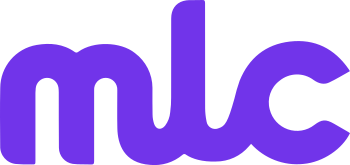Exploring the Role of ChatGPT in Language Translation: Can AI Chatbots Replace Human Translators?
In today’s interconnected world, the amount of data being exchanged across languages is vast. This surge has fuelled the demand for accurate translations, giving rise to advanced language models like ChatGPT. But can ChatGPT, or similar AI chatbots, truly rival professional human translators in delivering high-quality translations? Let’s delve into this intriguing question.
The Evolution of Language Translation Tools
Language translation tools have evolved significantly over the years. From basic dictionary-based translations to sophisticated machine translation (MT) systems, the journey has been remarkable. The advent of natural language processing (NLP) has been a game-changer, allowing machines to understand and generate human language with increasing accuracy.
ChatGPT: A Revolution in Natural Language Processing
ChatGPT, developed by OpenAI, is a state-of-the-art language model that uses NLP to comprehend and produce text in a human-like manner. It can translate text from one language to another, offering a potentially powerful tool for both casual and professional use. But how does it fare against established translation tools like Google Translate and DeepL?
Comparing ChatGPT with Google Translate and DeepL
Google Translate and DeepL are well-known names in the realm of machine translation. Both tools have their strengths:
- Google Translate: Known for its extensive language pairs and accessibility. It supports over 100 languages and is constantly updated with new data to improve translation quality.
- DeepL: Renowned for its nuanced and contextually accurate translations, particularly in European languages. DeepL’s neural network-based approach enables it to provide translations that often feel more natural and human-like.
While ChatGPT also utilises advanced NLP techniques, its primary design isn’t solely for translation. However, its ability to understand context and generate coherent text makes it a strong contender in the translation space.
The Mechanics Behind Machine Translation
Machine translation, including that by ChatGPT, relies on training data—large datasets of bilingual text. These datasets help the AI learn patterns and nuances in different languages. However, the quality of the translation depends heavily on the training data’s diversity and the model’s ability to handle various linguistic subtleties.
Advantages of Using ChatGPT for Translation
- Contextual Understanding: ChatGPT excels in understanding context, making it particularly useful for translating idiomatic expressions and complex sentences.
- Conversational AI: As an AI chatbot, ChatGPT can interact with users in real-time, providing immediate translations and explanations.
- Flexibility: ChatGPT can translate text while also offering additional functionalities like summarising, paraphrasing, and even generating new content based on user input.
Limitations and Challenges
Despite its strengths, ChatGPT has its limitations:
- Accuracy: While ChatGPT can provide accurate translations, it may not always match the precision of professional human translators, especially for specialised or technical texts.
- Training Data Limitations: The quality of translations is directly linked to the quality and breadth of the training data. Insufficient or biased data can lead to inaccuracies.
- Lack of Cultural Nuance: Human translators bring cultural awareness and contextual understanding that AI often lacks. This can be crucial for translations that need to resonate with a target audience on a deeper level.
Human Translation vs. Machine Translation
Human translation remains the gold standard, particularly for high-stakes documents like legal contracts, literary works, and marketing content. Professional translators bring a level of expertise and cultural sensitivity that machines are yet to fully replicate. They can navigate the intricacies of language and culture to ensure the translation is not only accurate but also appropriate for the target audience.
However, machine translation, including tools like ChatGPT, offers significant benefits for everyday use. They provide fast, cost-effective solutions for translating large volumes of text, making them invaluable for businesses and individuals alike.
Integrating ChatGPT into Professional Translation Services
Professional translation services can benefit from integrating ChatGPT into their workflow. By using ChatGPT to handle initial translations, human translators can then refine and polish the output. This hybrid approach leverages the speed of machine translation and the quality of human expertise, resulting in high-quality translations delivered more efficiently.
Case Study: My Language Connection Ltd on ChatGPT and Translation
A comprehensive article on My Language Connection Ltd explores the potential of ChatGPT in the realm of language translation. It highlights the strengths of ChatGPT in understanding context and generating accurate translations, while also noting its limitations compared to human translators. The article provides a balanced view, showcasing how ChatGPT can be a valuable tool when used appropriately within professional translation workflows.
Future of Language Translation
The future of language translation is undoubtedly bright, with AI and NLP technologies continuing to evolve. As these technologies improve, the gap between machine and human translation will likely narrow. Innovations in training data, model architectures, and cultural understanding will play crucial roles in this evolution.
Interestingly, ChatGPT and similar AI chatbots represent a significant advancement in the field of language translation. While they may not yet replace human translators, they offer valuable tools that complement and enhance traditional translation services. For businesses and individuals seeking fast and cost-effective translation solutions, ChatGPT provides a compelling option. However, for nuanced, high-stakes translations, the expertise of professional human translators remains indispensable.
By understanding the strengths and limitations of both machine and human translation, we can better navigate the complexities of multilingual communication in our globalised world. As AI continues to advance, the collaboration between machines and humans will likely define the future of language translation.
For more insights on the role of AI in translation and how professional services can benefit from these technologies, explore the comprehensive resources available on My Language Connection Ltd.

